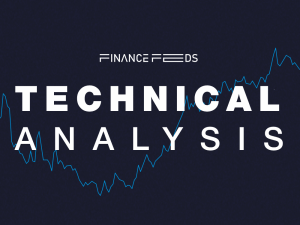Harmonization between US and Europe gains ground slowly but surely with regard to central counterparties
Over three years ago, the US Commodity Futures Trading Commission (CFTC) had begun several administrative steps in its post Dodd-Frank Act stages in that the infrastructure regulations for the entire institutional electronic trading industry had been set in place, especially with regard to reporting and clearing of trades via central counterparties (CCPs). These administrative steps […]

Over three years ago, the US Commodity Futures Trading Commission (CFTC) had begun several administrative steps in its post Dodd-Frank Act stages in that the infrastructure regulations for the entire institutional electronic trading industry had been set in place, especially with regard to reporting and clearing of trades via central counterparties (CCPs).
These administrative steps involved negotiations with government bodies in the European Union, Japan, Canada Singapore, and Australia, among other jurisdictions with advanced financial markets economies and large electronic trading businesses, in order to commence proceedings toward bringing into place a global, cross-border regulatory environment with regard to CCPs to ensure transparency and trade regulation for transactions which take place globally.
After several memorandums of understanding between regulatory authorities overseas and the CFTC, a further step toward global harmonization of regulatory rulings was made recently.
CFTC Commissioner J. Christopher Giancarlo made a statement with regard to the comparability determination for CCPs and clearing in the European Union.
“This action furthers a common approach for transatlantic central clearing counterparties (CCPs) announced on February 10, 2016 by my colleague, CFTC Chairman Timothy Massad, and Commissioner Jonathan Hill of the European Commission (EC). Under the comparability determinations, CCPs that are authorized in the European Union (EU) under the European Market Infrastructure Regulation (EMIR) and registered with the CFTC may comply with certain CFTC requirements for financial resources, risk management, settlement procedures, and default rules and procedures by complying with corresponding requirements under the EMIR framework. Today’s notice also provides for a streamlined approach for EU CCPs that may wish to register with the CFTC in the future.”
Commissioner Giancarlo continued “”I have observed the protracted process for reaching this compromise was made needlessly complex because both the EC and the CFTC insisted on a line-by-line rule analysis contrary to the flexible, outcomes-based approach advocated by the OTC Derivatives Regulators Group. While the end result is a good one, the approach taken to get here was needlessly circuitous and uncertain.”
“The CFTC and its global counterparts must now recommit themselves to work together to implement an equivalence and substituted compliance process, particularly for swaps execution and the cross-border activities of swap dealers and major swaps participants, based on common principles in order to increase regulatory harmonization and reduce market balkanization.1 The future of the global swaps marketplace depends on it” – Commissioner J. Christopher Giancarlo, CFTC.
The approach
Following this agreement the European Commission intends to adopt shortly an equivalence decision with respect to CFTC requirements for US CCPs which will allow ESMA to recognise US CCPs as soon as is practicable. Once recognised by ESMA, US CCPs may continue to provide services in the EU whilst complying with CFTC requirements. The CFTC staff will propose a determination of comparability with respect to EU requirements, which will permit EU CCPs to provide services to US clearing members and clients whilst complying with certain corresponding EU requirements. The CFTC staff will also propose to streamline the registration process for EU CCPs wishing to register with them.
Derivatives markets are global in nature. A common approach to their regulation and supervision is critical to supporting cross border activity and maintaining financial stability. Both the CFTC and EU requirements are based on international principles, which accounts for the high degree of similarity between the two regimes. The CFTC staff and the European Commission will work together, along with counterparts across the global regulatory community, to enhance the granularity of these principles and further harmonise the standards to which internationally active CCPs are held.
The steps needed to implement this agreement will be put into place as soon as practicable. The CFTC staff and the European Commission Services will work to ensure that changes are implemented in a coordinated manner, and to monitor the impacts resulting from the sequencing of the changes and assess whether any further actions must be taken to ensure financial stability or prevent regulatory arbitrage.
The common approach follows detailed analysis of the CFTC and EU regulatory requirements and of the financial resources of EU and US CCPs.
Key Elements of the Approach:
EU Equivalence
The European Commission will shortly propose for adoption an equivalence decision in respect of US CCPs. Equivalence is necessary so that the European Securities and Markets Authority (ESMA) can recogize US CCPs wanting to serve EU markets. Once recognized by ESMA, a US CCP may continue to provide services in the EU by complying with US requirements. It will also become a qualifying CCP for the purpose of the EU Capital Requirements Regulation, lowering costs for EU banks and their subsidiaries.
The proposed determination of equivalence is based on the condition that CFTC-registered US CCPs seeking recognition in the EU confirm that their internal rules and procedures ensure for clearing members’ proprietary positions in exchange traded derivatives, the collection of initial margins that are sufficient to take into account a two day liquidation period, that initial margin models include measures to mitigate the risk of procyclicality, and the maintenance of ‘cover 2’ default resources.
The conditions will not apply with respect to US agricultural commodity derivatives traded and cleared domestically within the US. This takes account of the significant nexus of these US contracts with the US economy, the importance of these contracts to US farmers and ranchers and recognises the low degree of systemic interconnectedness of these markets with the rest of the financial system.
In addition, the European Commission will shortly propose the adoption of an equivalence decision under EMIR to determine that US trading venues are equivalent to regulated markets in the EU, providing a level playing field between EU and US trading venues for the purposes of the MIFID I framework.
Before an equivalence decision is adopted by the Commission, Member State authorities must vote in the European Securities Committee. Once a decision is adopted, ESMA will proceed to complete the process for recognising applicant US CCPs, including the execution of a cooperation arrangement with the CFTC, providing for the ongoing sharing of information with respect to CFTC-registered US CCPs recognised in the EU. During the recognition process, CFTC-registered US CCPs will continue to benefit from any transitional relief under the Capital Requirements Regulation including any extensions that are granted.
FinanceFeeds recommends to bear in mind the continued delays which are being experienced in implementing the MiFID II rulings, as the full implementation is unlikely to be delivered by the expected date of January 2018.
Client margining standards
ESMA has recently consulted on the possibility for EU CCPs to apply an alternative standard for client margining. This would allow EU CCPs to comply with standards similar to CFTC requirements in this particular area. Such a change would reduce the possibility for regulatory arbitrage across jurisdictions whilst maintaining high regulatory standards. Therefore, it is necessary to proceed rapidly with the adoption of the relevant standard. The European Commission Services are of the view that any such alternative should also address the scope for regulatory arbitrage between US and EU standards with respect to margin obligations for clearing members and their affiliates.
Further work on international harmonisation
The CFTC staff and the European Commission recognise that the cleared derivatives markets are developing and expanding at a rapid pace across the globe.
CFTC requirements and EU requirements are both based on international minimum standards which accounts for the high degree of similarity between the two regimes.As part of this process, the CFTC staff and the services of the EC assessed differences where the CFTC requirements can be considered to be more stringent than the EU requirements and other differences where the EU requirements can be considered to be more stringent.
Nevertheless, the CFTC staff and the European Commission Services believe that there is scope to expand the range of, and add further detail to, the international principles in this area. In particular, CPMI-IOSCO work on CCP resilience provides an opportunity to reflect on whether the standards contained in the PFMI for initial margin methodologies are sufficiently granular and robust.
The common approach references only the CFTC’s requirements for derivatives clearing organisations. It does not reference the United States Securities and Exchange Commission’s (SEC) requirements for clearing agencies which is a separate and distinct regime. The European Commission continues to be in constructive and progressive discussions with SEC staff regarding the SEC’s requirements, in the context of the European Commission’s analysis of equivalence.









